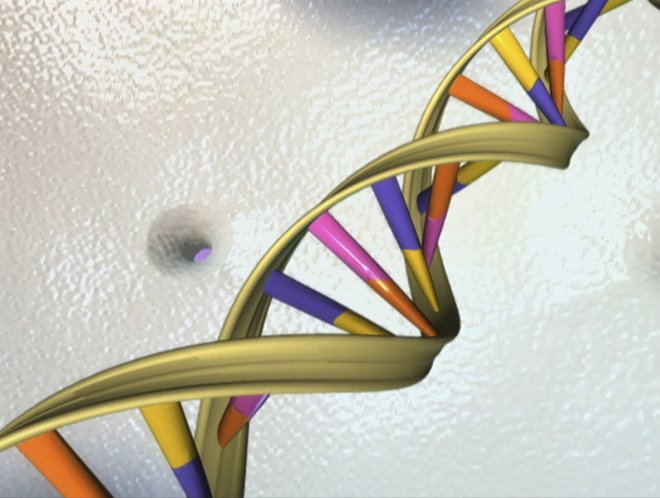
U.S. scientists have developed two new molecular editing tools which could help cure the majority of the genetic diseases in humans. The new technique could even fix the disease-causing mutations which do not have any known treatments.
David Liu of the Harvard University and the Broad Institute of MIT and Harvard has developed a technique which could fix single-letter mistakes in a DNA (deoxyribonucleic acid) sequence, the constituents of genes.
The second method, developed by Feng Zhang, a molecular biologist at the Broad Institute, seeks to make changes to the RNA (ribonucleic acid) that carries messages from the DNA for producing proteins.
According to the research papers published in the journal Nature, these techniques edited the single letter chemical errors in the genetic materials unlike the DNA cutting technique used by the CRISPR-Cas9 gene editing tool. The CRISPR gene editing tool would trim the unwanted parts of the human genome. Liu described that the "CRISPR is like scissors, and base editors are like pencils."
The genes are made of six billion chemical bases or genetic letters which constitute DNA. The chemical bases adenine (A), cytosine (C), guanine (G), and thymine (T) combine as base pairs of two bases each and form a spiral ladder of DNA. The base pairs are found in specific patterns as C pairs with G, and T pairs with A.
A single letter mutation at any point of these bonding base pairs can result in genetic diseases. Liu's team have developed the base editor which could replace a wrongly placed CG base pair into AT pair.
Liu's team has found a new enzyme which could entirely convert an AT base pair into GC. Similar results couldn't be made from any previous studies.
This result could make the huge difference in the field of treating genetic diseases as 32,000 diseases were caused due to misplacement of GC base pair at the AT genome spot.
According to reports, Dana Carroll, a gene-editing expert at the University of Utah who was not involved in this research, "They (the teams) came up with an enzyme that is very specific and very effective. It really was a heroic effort and very beautifully done."
Carroll stated that the gene editing enzyme would be a very useful tool for both research and practical studies in medicine and possibly in agriculture.
Prof. Robin Lovell-Badge of the Francis Crick Institute in London commented in a report that "since base editing does not cause a break in the DNA, it might produce more predictable results than CRISPR, which can cause 'slightly unpredictable' insertion or deletion in the genetic code."
The second model of genetic treatment which was published in Science mentioned Zhang's method which used an improvised version of CRISPR to edit RNA. This method helped researchers to make precise changes in RNA at different points of the cell.
David Cox, a graduate student in Zhang's lab said that the RNA editing system, called REPAIR, can "fix mutations without tampering with the genome." However, the changes are not permanent because RNA degrades over time.
According to Carroll, even though both the genetic engineering methods have better chance to correct specific diseases from gene mutations, it is not yet ready to be used in humans.
However, a report published in September said that researchers at the Sun Yat-sen University in China have corrected the genes which caused beta-thalassemia, a blood disorder, in human embryos. The researchers have claimed to have created the mutation in a single defected thalassemia causing DNA code in embryos.
But the researchers aren't yet ready to test this in humans as it might cause mutations instead of fixing it. But research to fix genetically transferred diseases with this method has been continuing. Several countries have banned genetic researches on humans due to ethical reasons.
Carrol had earlier stated that "there are a number of hurdles that need to be overcome, including proving efficiency, specificity, and safety. The scientists also need to develop ways to deliver the editing systems into the correct cells in the body."
Rats and mice are considered the model animals for any research aimed at humans. The similarities in genetic patterns of rodents and humans have helped in substituting rodents in laboratory research. Pigs are another species which are used at least in certain experiments which would benefit humans.
A recent research by Chinese scientists has produced genetically modified pigs which had lesser fat accumulation. The researchers said that the genetically modified pigs could withstand bitter cold while the normal pigs need special care to tolerate it.
Even, genetically modified mosquitos are currently being tested to prevent mosquito-causing diseases.









